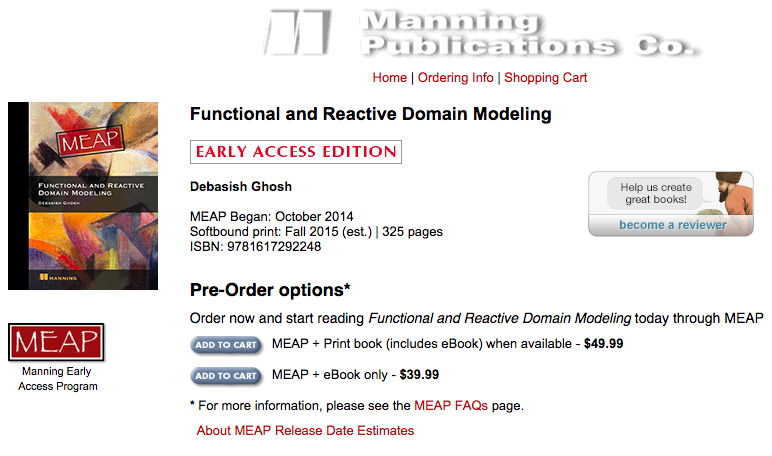The introduction to Reactive Programming you’ve been missing by Andre Staltz.
From the post:
So you’re curious in learning this new thing called (Functional) Reactive Programming (FRP).
Learning it is hard, even harder by the lack of good material. When I started, I tried looking for tutorials. I found only a handful of practical guides, but they just scratched the surface and never tackled the challenge of building the whole architecture around it. Library documentations often don’t help when you’re trying to understand some function. I mean, honestly, look at this:
Rx.Observable.prototype.flatMapLatest(selector, [thisArg])
Projects each element of an observable sequence into a new sequence of observable sequences by incorporating the element’s index and then transforms an observable sequence of observable sequences into an observable sequence producing values only from the most recent observable sequence.
Holy cow.
I’ve read two books, one just painted the big picture, while the other dived into how to use the FRP library. I ended up learning Reactive Programming the hard way: figuring it out while building with it. At my work in Futurice I got to use it in a real project, and had the support of some colleagues when I ran into troubles.
The hardest part of the learning journey is thinking in FRP. It’s a lot about letting go of old imperative and stateful habits of typical programming, and forcing your brain to work in a different paradigm. I haven’t found any guide on the internet in this aspect, and I think the world deserves a practical tutorial on how to think in FRP, so that you can get started. Library documentation can light your way after that. I hope this helps you.
…
Andre is moving in the right direction when he announces:
FRP is programming with asynchronous data streams.
Data streams. I have been hearing that a lot lately. 😉
The view that data is static, file based, etc., was an artifact of our storage and processing technology. Not that data “streams” is a truer view of data but it is a different one.
The semantic/subject identity issues associated with data don’t change whether you have a static or stream view of data.
Although, with data streams, the processing requirements for subject identity become different. For example, with static data a change (read merger) can propagate throughout a topic map.
With data streams, there may be no retrospective application of a new merging rule, it may only impact data streams going forward. Your view of the topic map becomes a time-based snapshot of the current state of a merged data stream.
If you are looking for ways to explore such issues, FRP and this tutorial are a good place to start.
